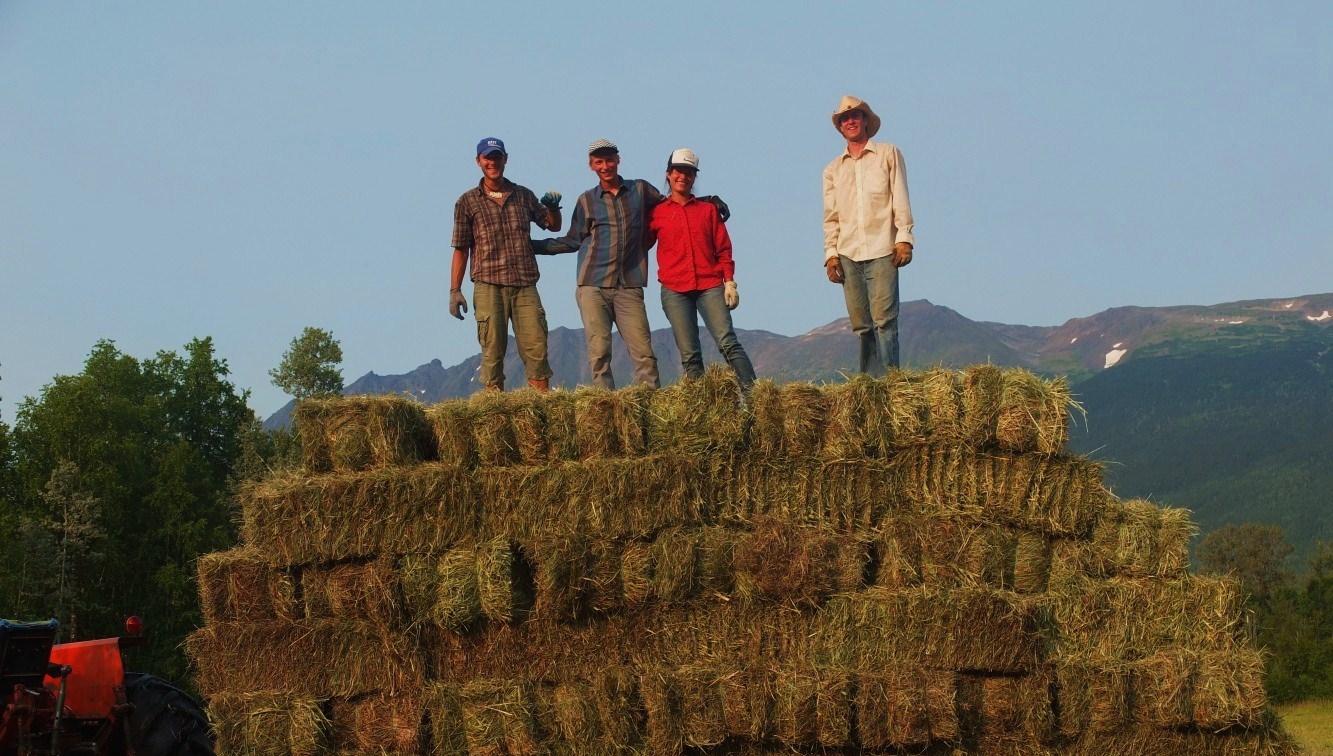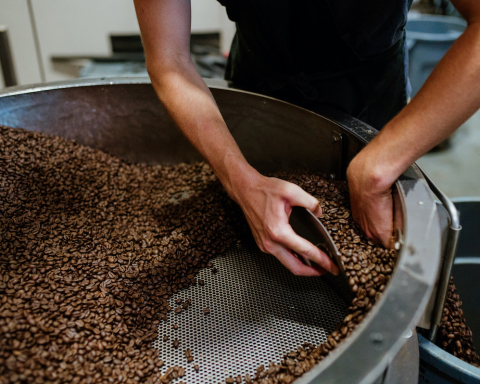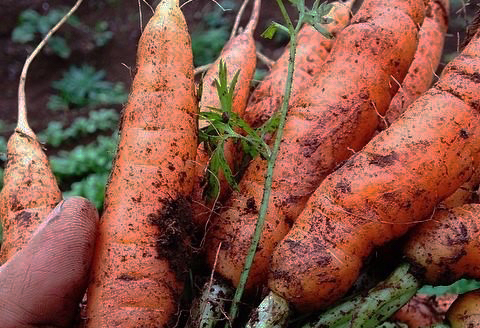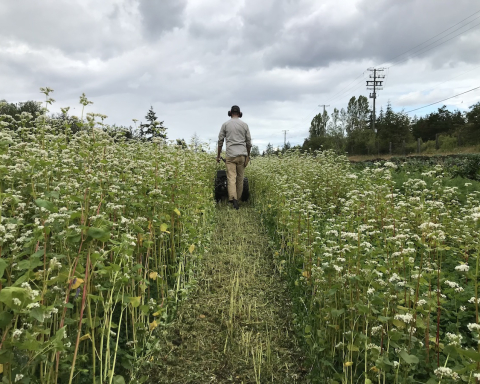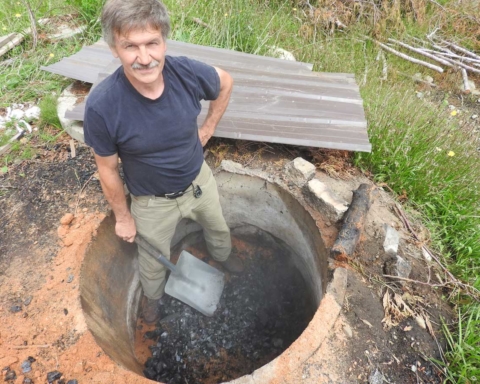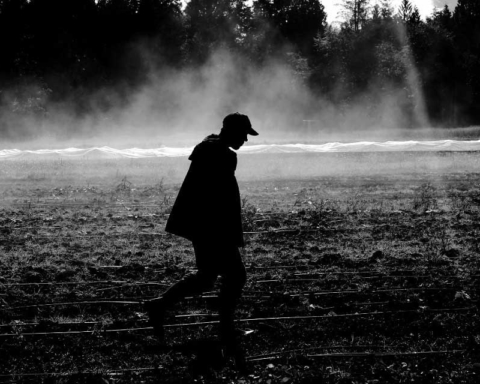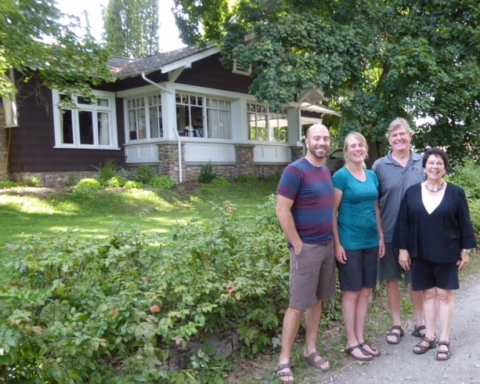Jonathan Knight
If you walk out the back door of the little blue farmhouse at WoodGrain Farm, past the acre of market gardens and the old log outbuildings and barns, and back through the forest high along the banks of the Skeena River, there is wilderness. This is real wilderness, where one could follow ancient footpaths of the Gitxsan people and century-old telegraph trails hundreds of kilometers into the heart of the Sacred Headwaters, from where the three great salmon rivers of northern BC, the Skeena, Stikine, and Nass, flow.
I’ve always been drawn to places on the edge, interested in the transition between where one place ends and the next begins, whether a seashore or a mountainside. This valley is very much where the last patchwork of rural habitation meets the wide open wilderness of the northwest.
I wasn’t always planning on being a farmer, but knew I would one day end up on a homestead in a wild place. Yet I was aware that once you choose to live deliberately on a piece of land, you don’t do much else, and I had other lives to live first. During time spent living and travelling around Europe and India in my early twenties, I explored my relationship with food, particularly drawn to old methods of craft food production, culminating in an apprenticeship in organic bread making.
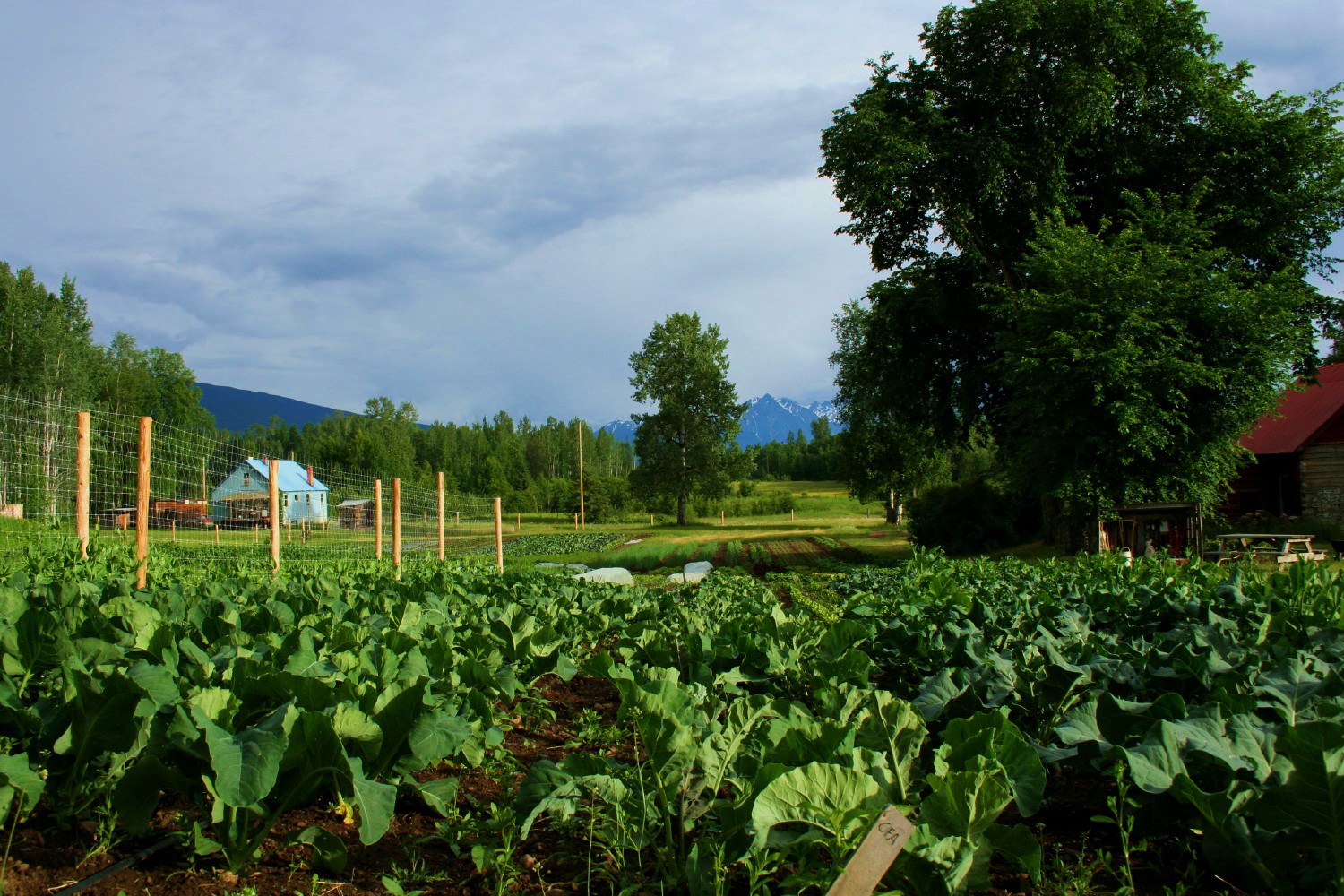
I’ve always been drawn to places on the edge. This valley is where the last patchwork of rural habitation meets the wide open wilderness of the northwest.”
The apprenticeship was followed by a couple of years cycling and WWOOFing across Canada, after which I returned to BC and opened the popular True Grain Bread in Cowichan Bay. In the second year the bakery installed a stone mill, which shortened the links between the farmer and the baker, opening up a treasure trove of heirloom grains and the opportunity to work with local farmers to get grain growing on Vancouver Island. As passionate as I am about craft bread making, I still felt the strong pull backwards, towards the very basics—the grain, or seed, and the soil. In 2008 the bakery was transitioned to its present owners, and I set off with my then-partner on another bicycle odyssey of rural Canada.
If you trace the line on the map, Highway 16 heads northwest out of Prince George where it leaves the interior plateau and passes into the broad, pastoral Bulkley Valley. Past Smithers, the Bulkley flows into the Skeena, and the highway makes an abrupt left to follow the river’s course southwest to Terrace and the coast. At this confluence of the rivers, the northernmost point on the Yellowhead, lie the villages and settlements that comprise the Hazeltons. Instead of following the highway downstream, turning right to follow the Skeena due north for 20km will bring you to the Kispiox Valley, the most northern reach of the Agricultural Land Reserve west of the Rockies and, at one point, home to the second oldest Farmers’ Institute in BC.
When we first pedalled through these parts, we were struck by the mountains and open spaces of the Bulkley Valley, and by the vibrant youthful community around Smithers. We returned that fall with the intent of looking for land, and people kept telling us “you have to check out the Kispiox Valley” in a way that sounded almost mystical. In a practical sense, the Kispiox enjoys a temperate coastal influence from the Skeena, which makes it noticeably warmer than Smithers just an hour to the east, but with not nearly the precipitation of Terrace two hours to the west. It felt like the right balance for making the most of the shorter but more intense northern growing season.
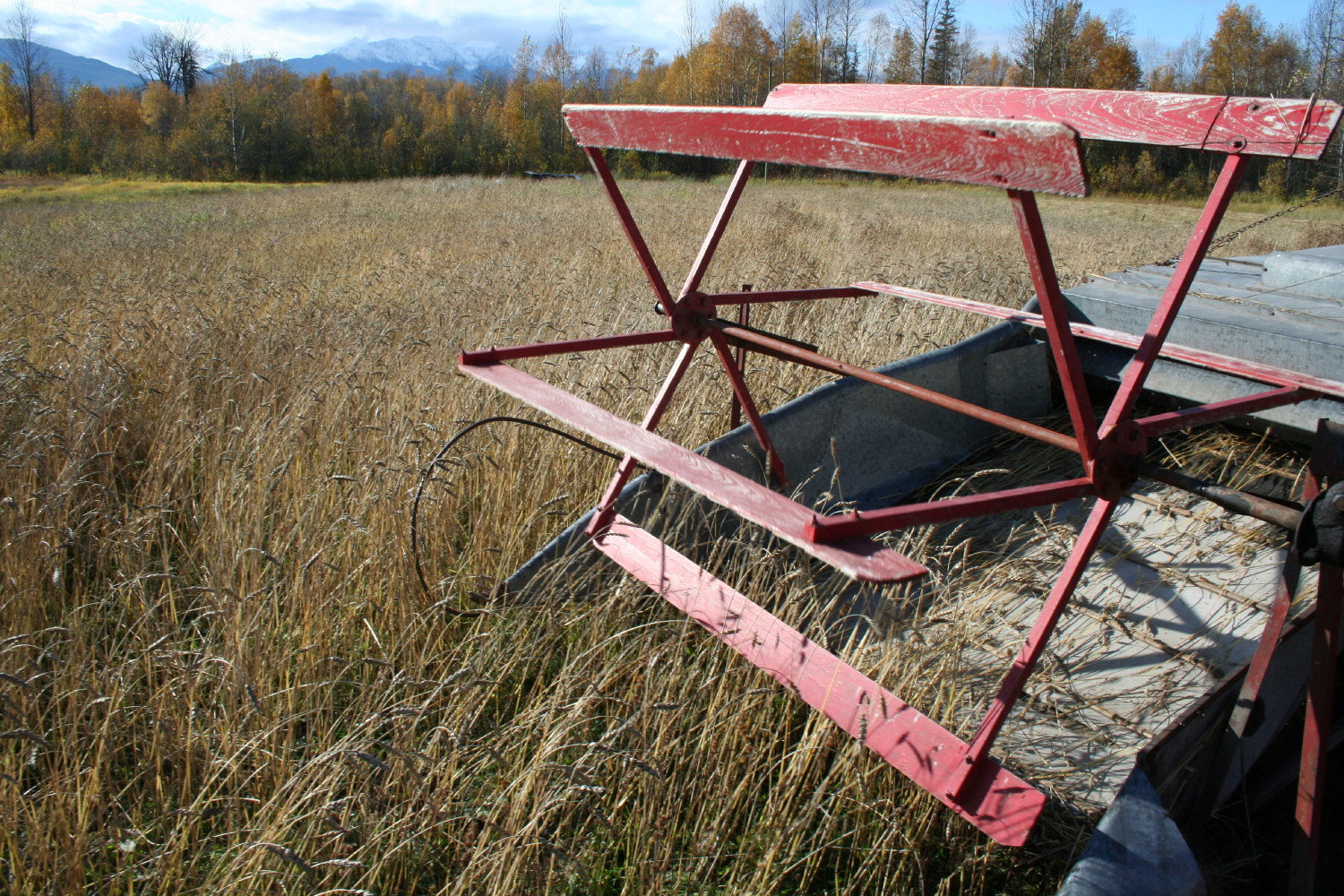
It also fit another important criteria. I didn’t want to end up living just somewhere along a highway, where there is the tendency to drive into town whenever you need something or are feeling social. The Kispiox Valley is definitely a place unto itself, with a strong character and community. Beyond the Gitxsan village at the Kispiox River’s confluence with the Skeena, the valley is home to about 200 folks of mostly rancher/logger or back-to-the-lander origin, with a thriving community hall and annual rodeo and music festival.
The valley was first farmsteaded about a hundred years ago, and this farm was one of the original staked. It had been sitting gracefully fallow for about 30 years when we found it, and began the work of slowly bringing it back to life. A fair number of valley folk today have roots on this farm, and the support we’ve had from our neighbours since the beginning has been immeasurable. Wilfred, an old-time neighbour who tilled our first garden space for us, remembers running and hiding under the bed when the valley’s first tractor was being unloaded on the farm. That rusty W4 is here still.
When I’m asked for advice by prospective new farmers, it is not to rush into too much, too soon. That first year, we helped get a fledgling Hazelton Farmers’ Market going, planted a modest market garden on freshly tilled old pasture (with no rototiller), bought the sweetest Jersey cow named Elsie, sheep for the pasture, pigs for the tillage, and a hundred laying hens. Never mind that the buildings were all in need of serious repair, the house was decrepit, there wasn’t an intact line of fence on the place, we had no haying equipment, and I was also committed to help get a small social enterprise bakery in town off the ground. Whether the decisions we made to jump in with both feet had much of a bearing on it or not, the outcome was that by the second year I was alone on the farm.

Well, not quite alone. There were always the WWOOFers. My experiences WWOOFing have been invaluable in a lot of what I have learned how to do (and not to do!), and I am privileged to be able to offer that in return. No matter how hectic things can feel at times, I try and always keep in mind that the experience this person is having here may just well be changing their lives. It had changed mine.
More permanent help soon arrived. Andi and Ryan came fresh off a SOIL apprenticeship and partnered for a season of market gardening, where we quickly out-produced the demand in Hazelton and started to regularly attend the Bulkley Valley Farmers’ Market down the road in Smithers. Next came Angelique and Lynden, first as WWOOFers and then for two seasons as market gardeners. They, with their new daughter born on the farm, are moving on this spring. But, as with Andi and Ryan and their new twins, to another place just around the corner. The valley’s population has grown by seven.

Going into this seventh season of farming, the balance between farming as a business and homesteading as a life choice feels more settled. Growing systems are figured out, perennial weeds are getting worn down, fences are keeping animals put, buildings are staying up, the farm is established at the markets, and farm earnings are forecastable. It’s now easier to make deliberate choices, about where to focus and what to cut back on. Hay needs to be brought in for the winter, but otherwise the balance can be tipped from side to side. Grow more for the markets, or work on improving self-sufficiency on the farm. Farm to earn money, or farm to reduce the money needed to be earned. Feed and nurture your community, or feed and nurture your soul.
When I manage to stand back far enough to get a good vantage point of the farm as a whole, it is neither here nor there. Not what is was in the past, and not what it will become in the future. I have incredible admiration for the work that was done by the original homesteaders, clearing the land and building the hand-hewn log house with an axe, but I wouldn’t wish to be in their shoes for a moment. My respect is not diminished for the later generation who raised cattle here because they might have sprayed Tordon, those were different times. The thistles survived it nevertheless. Nowadays, the soils are healthy and being improved with each season. The fertility of the fields is passed through the animals to the market garden. Innovations like drip irrigation, electric fences and hay balers are the envy of those who have farmed here before us.
The farm provides our vegetables and fruit, grains and bread, dairy and cheese, meat and eggs, and our livelihoods. But others will come and go, and hopefully settle close by, and this place will continue to evolve with the people who live here. The farm will remain on the edge, of what it has been and what it might become.
Jonathan Knight organically farms WoodGrain Farm with his partner Jolene Swain.
*The photo of WoodGrain farm that appeared on the cover of the Fall 2016 BC Organic Grower was taken by Jolene Swain and attributed in error to Jonathan Knight.


